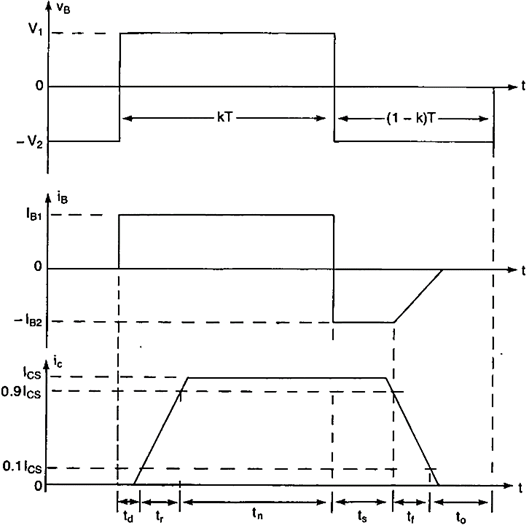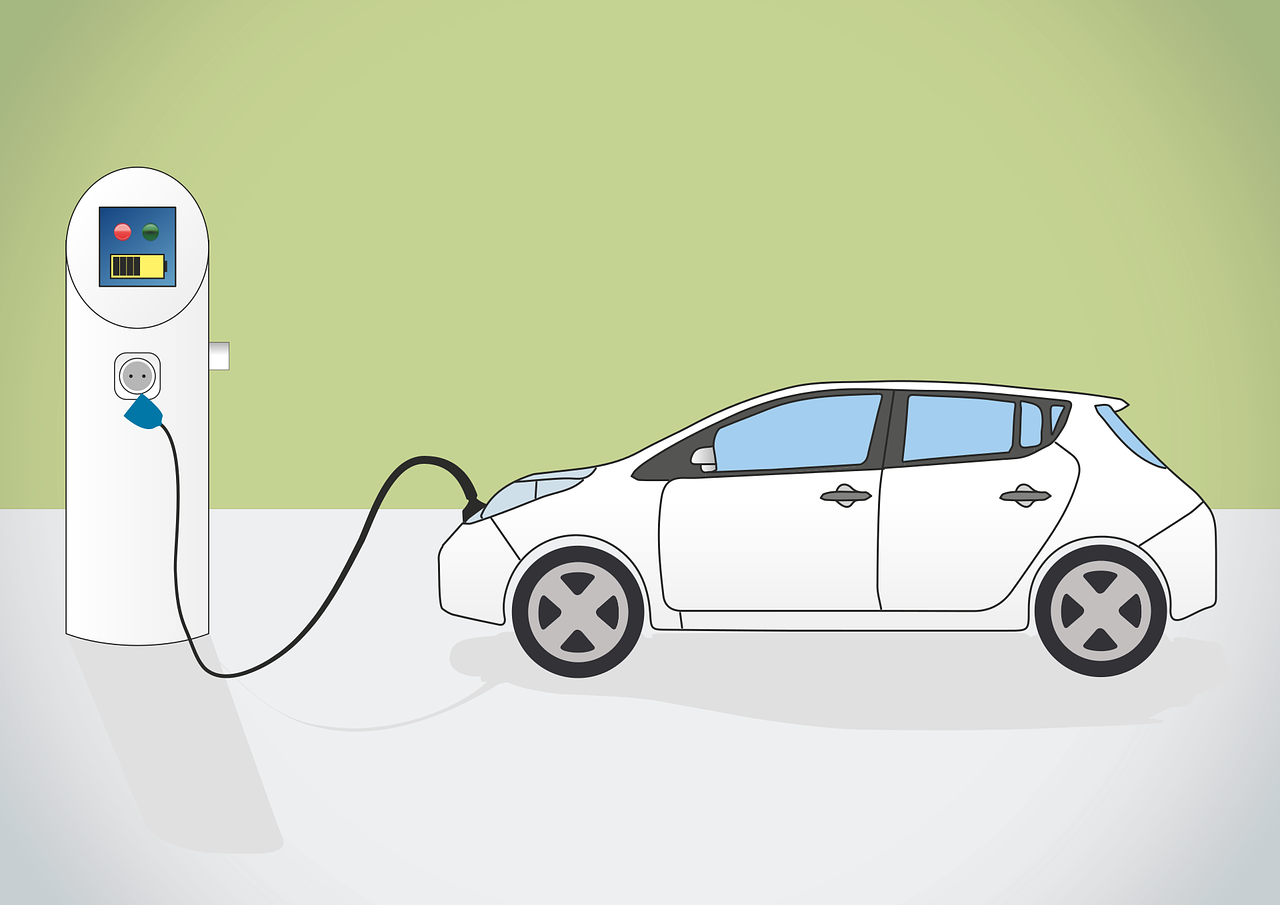Switchibg Characteristics of Power BJT
A forward biased pn junction exhibits two parallel capacitances: a depletion-layer capacitance and a diffusion capacitance. On the other hand, a reverse biased pn junction has only depletion capacitance. Under steady-state conditions, these capacitances do not play any role. However, under transient conditions, they contribute to the turn-on and turn-off behavior of the transistor.
Due to internal capacitances, the transistor does not turn on instantly. Figure 6 illustrates the waveforms and switching times. As the input voltage vB rises from zero to V1 and the base current rises to IB1, the collector current does not respond immediately. There is a delay, known as delay time, td before any collector current flows. This delay is required to charge up the capacitances of BEJ to the forward bias voltage VBE. After this delay, the collector current rises to the steady state value of ICS. The rise time, tr, depends on the time constant determined by input capacitances.
The base current is normally more than that required to saturate the transistor. As a result, the excess minority carrier charge is stored in the base region. The higher the overdrive factor (ODF), the greater is the amount of extra charge stored in the base. This extra charge, which is called the saturating charge, is proportional to the excess base drive.
$latex {{I}_{e}}={{I}_{B}}-\frac{{{{I}_{{CS}}}}}{\beta }=ODF\,{{I}_{{BS}}}-{{I}_{{BS}}}={{I}_{{BS}}}\left( {ODF-1} \right)$
Saturating charge, $latex {{Q}_{S}}={{\tau }_{s}}{{I}_{e}}={{\tau }_{s}}{{I}_{{BS}}}\left( {ODF-1} \right)\,$
where $latex {{\tau }_{s}}$ is known as the storage time constant of the transistor.
When the input voltage is reversed from V1 to –V2, and the base current is also changed to –IB2, the collector current does not change for a time, ts, called the storage time. The storage time is required to remove the saturating charge from the base. Since vBE is still positive with approximately 0.7V, the base current reverses its direction due to the change in the polarity of vB from V1 to –V2. The reverse current, –IB2, helps to discharge the base and remove the extra charge from the base. Without –IB2, the saturating charge must be removed entirely by recombination and the storage time would be longer.

Figure 6
Once the extra charge is removed, BEJ charges to the input voltage, –V2, and the base current falls to zero. The fall time, tf, depends on the time constant, which is determined by the reverse biased BEJ.
latest video
news via inbox
Nulla turp dis cursus. Integer liberos euismod pretium faucibua







